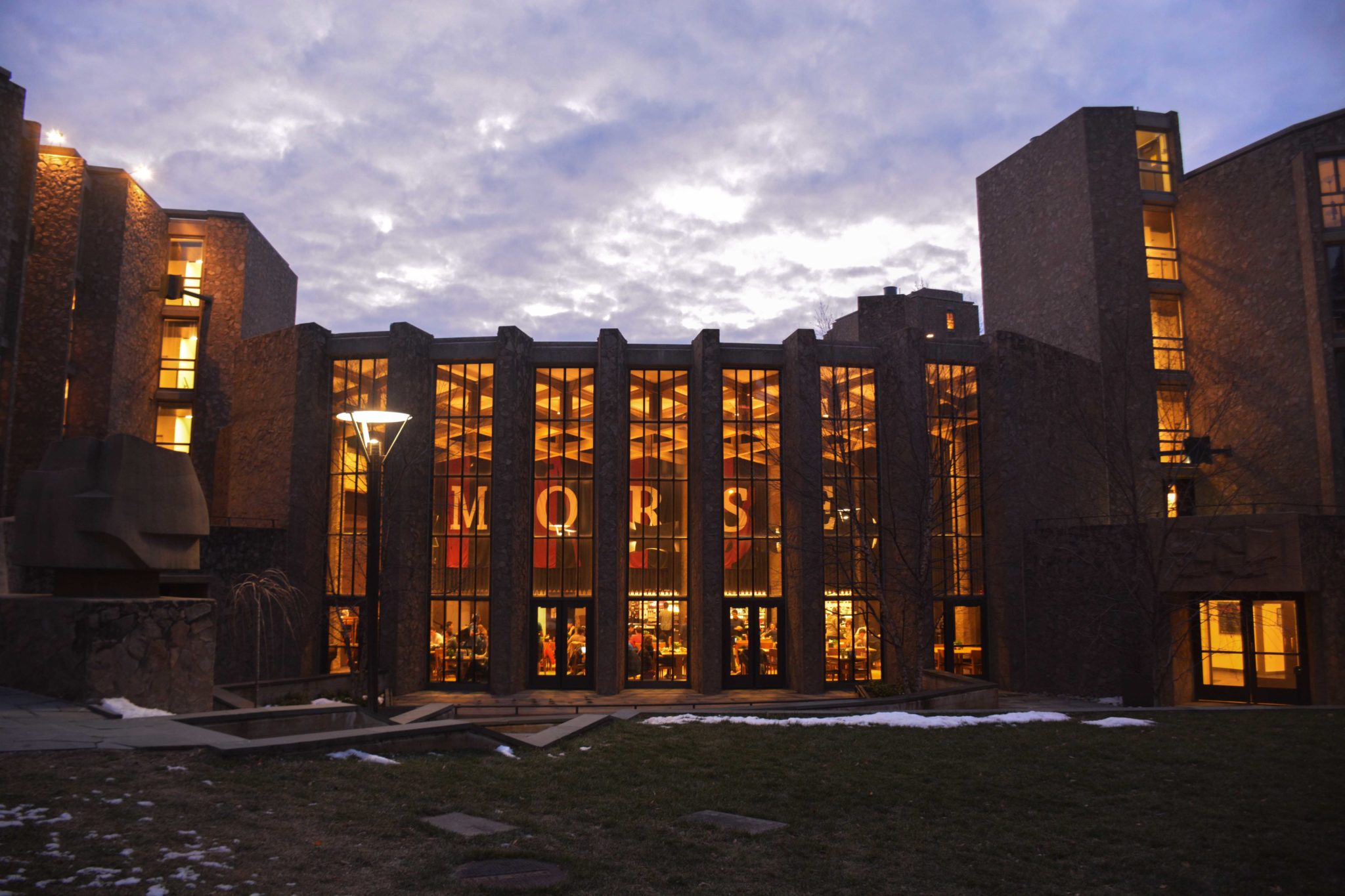
Yale Daily News
On Tuesday, Kevin Adkisson ’12, associate curator at the Cranbrook Center for Collections and Research, hosted a lecture on architect Eero Saarinen ARCH ’34, who designed several buildings at Yale.
Because Saarinen is most well known at Yale for designing Ezra Stiles and Morse Colleges, the event was free to students in both. At the lecture, Adkisson delved into Saarinen’s family, early life and career, his projects at college campuses across the country and his work at Yale, which, according to Adkisson, includes some of the architect’s most notable creations.
“These are some of Eero Saarinen’s most interesting and controversial buildings,” Adkisson said of Saarinen’s Yale designs. “The process of how they got built reveals Saarinen’s strengths and weaknesses as a designer and as a modernist.”
In designing what at the time were the “new colleges” — Benjamin Franklin and Pauli Murray have since taken over this title — Adkisson said Saarinen wanted to prevent them from looking like “poor cousins” to the existing 10 colleges, so he asked his contractor how much it would cost to essentially “build another Branford” — the response was a figure over 20 times Saarinen’s budget.
The result was a “challenge” for Saarinen — Saarinen thought the plot of land where Morse and Stiles now stand was, according to Adkisson, “in shadow, irregular and odd.” After a series of meticulous photographs and models, the architect wound up with buildings unlike anything else at Yale.
“You have these highly irregular, individualistic, celebrations and reinterpretations of the Gothic in this modern style,” Adkisson said. “A British critic called them disgusting in the New Statesman and said they ‘exhibit the symptoms of a fairly advanced case of the mania for the picturesque.’”
At the lecture Adkisson noted that, in contrast to Ezra Stiles and Morse, Saarinen’s work on Ingalls Rink on Science Hill has always received widespread praise for its beauty.
The rink is based around a central arch, stabilized by cables linked to the middle of the structure. Adkisson said the design provides a dynamic experience when hockey is in session.
“You go in through this wonderful sculpture by Oliver Andrews, and you sort of get the excitement of sport, and you’re shoved into the arena,” he said. “The hockey players skate back and forth across the ice. And as the puck goes from the end of the room to the end of the room, your eye goes up to the top of the arch and back down to focus on the goal. Saarinen has created really thrilling architecture.”
Notably, Adkisson said, at the time, the inhabitants of Ingalls — the Yale men’s hockey team — loved it and that they “thought it was like playing on a pond.”
Surry Schlabs ’99 GRD ’17, a professor at the Yale School of Architecture, lived in Ezra Stiles when he attended Yale College. Schlabs told the News he thought Saarinen’s work on the college deserved more credit.
“Saarinen was a lot smarter and a lot more historically aware than most people give him credit for,” Schlabs said. “Yale’s obviously famous for its Gothic revival architecture, but the Gothic colleges at Yale tend to be built in a much more Northwest European Gothic idiom. Saarinen’s reference was similarly medieval, but he looked to the medieval Italian architecture and medieval Italian hilltowns. I think they’re quite clever.”
Due to this fall’s unusual housing arrangements, first years placed in Ezra Stiles or Morse live, not on Old Campus, but in Saarinen’s colleges.
Elijah Boles ’24, who lives in Ezra Stiles, said he does not love the architecture itself, but that it is nice to have a change of pace in the context of Yale’s generally Gothic theme.
“I’m not the biggest fan of the look, but I do like the fact that it’s distinct from other colleges and that you can appreciate the architecture of the surrounding areas,” Boles told the News. “It stands out and makes Stiles homey, even if objectively it isn’t the prettiest.”
Schlabs also noted that in terms of facilitating social interaction, Ezra Stiles and Morse are somewhat limited.
While colleges like Silliman and Davenport feature sprawling quadrangles, Saarinen’s colleges were built around relatively small, irregularly-shaped courtyards.
“I do think the courtyards are more or less useless,” Schlabs said. “They’re on a slope, they’re triangular — there’s not much you can do there, unlike some of the classic quads. As social spaces, the courtyards in Stiles and Morse are lacking.”
At the lecture, Adkisson noted that what the Ezra Stiles and Morse courtyards have are the decorations that come from the Italian hilltown imitation, like the fountains outside the dining halls and the sculpted figures by Costantino Nivola — “they add this mysterious life to the complex,” he said.
Ezra Stiles and Morse Colleges were built in 1961.
Owen Tucker-Smith | owen.tucker-smith@yale.edu







